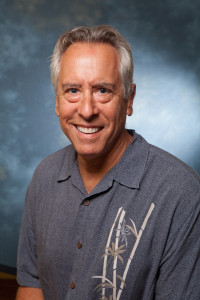Frank Frisch, Chapman University – Osteoporosis & Stress Factors
Can stress in the workplace intensify the symptoms of osteoporosis?
Frank Frisch, a kinesiologist at Chapman University, is working with rats to study the degenerative disease.
Dr. Frank Frisch is a professor of kinesiology at Chapman University in Orange, California. He earned his PhD at the University of South California specializing in working with bone metabolism and science education. A recipient of numerous awards, Dr. Frisch currently teaches biology and human nutrition.
Osteoporosis & Stress Factors
![]() Osteoporosis is a bone degenerating syndrome that is accelerated when women go through menopause. And, we’ve now found that some work-related stresses, and their consequences, such as sleep deprivation o increase the rate of bone loss.
Osteoporosis is a bone degenerating syndrome that is accelerated when women go through menopause. And, we’ve now found that some work-related stresses, and their consequences, such as sleep deprivation o increase the rate of bone loss.
Thus, our study is especially pertinent to executive women who typically get the double whammy of menopause coupled with sleep deprivation.Our study sought to mimic the hormonal environment of women who cope with high psychological stresses, coupled with the challenges of menopause.We removed the ovaries of 33 female rats and exposed them to a sleep deprivation protocol for 6 weeks.
We also introduced a bone-protecting drug (Zolendronate) in some animals andevaluated their blood and bone tissues for markers of stress and bone loss. During periods of stress the body makes is an inflammation marker called Tumor Necrosis Factor Alpha or TNF alpha. TNF alpha is made by lots of different cells and has a host of properties including insulin resistance, elevated body temperature, reduced appetite as well as cause clinical problems associated with autoimmune disorders like rheumatoid arthritis and refractory asthma.
Elevated TNF alpha levels are also implicated in osteoporosis.
We found that sleep deprivation significantly increased TNF alpha but those animals that had been treated with the medication responded with blunted TNF alpha levelsOur findings provided encouragement that a bone medication may also inhibit TNF alpha concentrations, thus providing an additional weapon in the fight to treat osteoporosis without the use of hormone replacement therapy.



